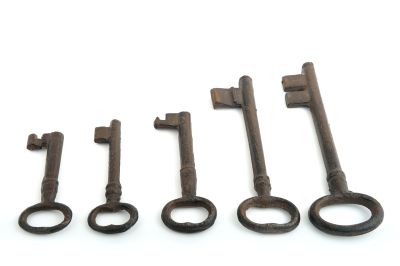Every single person in the organization has a hand in a strong safety culture. It doesn’t work any other way.

Strong safety cultures are built on character and values like courtesy, respect, sharing, teamwork and personal leadership. They are not built on certifications, hierarchies, self-congratulations, position or tenure.
For safety managers, supervisors, foremen and senior management, here are 5 things you absolutely must know if you want to shift your safety culture.
1People don't just change their minds about safety. They make new decisions based on new information. They also change their minds on old information when it’s re-framed in a new way. People have their own attitudes, opinions and beliefs. They believe what they believe. Your job is to align their values with the corporate safety values. You’ve got to find areas of common interest first. The issue is never that people aren’t using the correct safety process. The issue is that people choose something else. You’ve got to help them see that the safety program is helping them, not hindering. You’ve got to change their minds about what they believe the safety program to be and make it align with what they believe. Find the common ground and start there, one-on-one.
2Negative only works for a little while. You should not feel sick to your stomach or have tears drip from your eyes when you talk about safety. Grow up. Scare tactics, gruesome photos and victim stories overshadow your safety program. The gut-wrenching stories detract from the messaging - not help it. If you’re still employing these tactics, then you are admitting that as a manager, a coach and as a mentor in safety, you’re out of ideas. Scare tactics are lazy and for amateurs. They don’t result in long-term buy-in. They only get short-term compliance. And you will have to repeat it often - each time more sensational than the last. Be bigger than that. Be a mentor that your people look up to. Build a legacy on care, compassion, coaching and integrity. People respect that. Treat them like the grown-ups they are.
3The best place to work is the safest place to work. Never do you find an unsafe workplace that attracts high performers. If you want to attract the best in your industry, you have to become the best place to work. Unsafe workplaces or companies with poor safety performance are never the best place to work. At best, it's mediocre - always playing catch-up with those ahead of them. A strong safety culture becomes your competitive advantage when searching for and keeping excellent employees. The best place to work, the safest place to work, will always be the employer of choice for high performers.
4A strong safety culture isn't created by you alone. But a lousy safety culture is. Every single person in the organization has a hand in a strong safety culture. It doesn’t work any other way. If only half of the employees buy-in, you wont have a strong safety culture. Mediocre, maybe. But not a bulletproof safety culture. A lousy safety culture is the default position. It's where most of them start - just doing enough to give the illusion of meeting the OH&S code. Meeting a minimum standard is easy to do. But to build a strong culture requires everyone to buy-in. Your job is to convince each employee to give their hearts and minds to safety. And when you do reach that strong safety culture, forget the self-congratulating. Congratulate and recognize the employees. They made a bigger shift than you did.
5Employees don’t care what you have to say. In fact, most of them don’t even believe what you have to say about safety. But, they will be checking you out to see if you believe what you have to say. If you're relying on your PowerPoint slides to do the arguing for you, they're checking-out, not buying-in. Could you talk about safety in a way that resonated with your employees for an hour without a single PowerPoint slide? Until you can, you are going to struggle to get buy-in. It doesn’t matter that you have cool slides or that you’ve been in safety for twenty-plus years. They don’t care. They only care that you care - about them. Check your ego at the door. They’re not impressed by your title or your certification. Safety isn’t a hierarchy. It’s a way of life and a way of showing how much you value your people and how much they should value themselves. People will want to look out for themselves and each other. When they feel valued, they will take pride in their work. They will protect that pride with safety.
Safety needs to be selfless. No one and everyone gets recognized for a strong safety culture. It's a team-effort. No one gets left behind.
--
Finding new and unique ways of appealing to employees to embrace safety can prove difficult. Start 2015 the right way. Call Kevin to bring his presentation of personal leadership in safety to your workplace. Kevin’s presentation will support what you’ve been saying to your employees. Kevin will also align with your corporate safety program. Your employees will actually enjoy the safety meeting.



